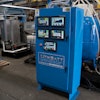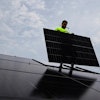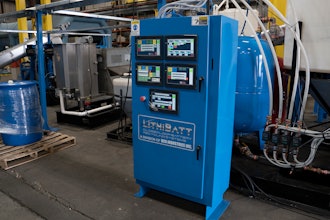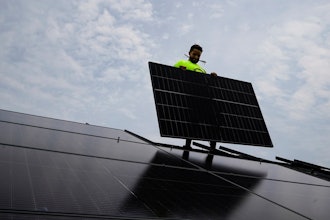Solar photovoltaic (PV) technology has been around for most of the 20th century; however it has only made financial and commercial sense in the last five to 10 years. The growth of the PV industry has been driven by the improving economics associated with a PV install as a result of cost reductions and incentives.
As solar panels became more efficient, the decision to install panels on a building’s roof as a means to offset utility bills became more reasonable and more common.
Given the recent advances in solar technology, the average home has enough roof space to generate 75-100 percent of its electrical needs through solar panels. In the commercial space, that percentage can vary depending on the size of the roof compared to the electrical needs, with some properties generating 100 percent of their power via solar.
One of the unique characteristics of PV solar that has helped proliferate its use is its ability to be deployed almost anywhere. While generators that make use of fossil fuels have become commonplace at commercial sites, they are typically used as backup power in the event of a blackout. These units also require fuel to be kept on site or to be delivered.
PV, however, can be used in combination with the utility grid to offset a building’s electrical needs and to supplement the grid by back feeding power. In addition to being a “clean” fuel source, PV technology also provides the owner with the benefits of no moving parts and no delivery of fuel.
Tall commercial properties often have small roof space compared to the total square footage of the buildings. If you assume that a building’s square footage is directly proportional to energy usage, these properties do not have the necessary roof space to offset their energy needs with solar. This also applies to commercial buildings with fewer floors but with high energy consumption (i.e. factories, electronic retailers).
While this is not a gating factor for using PV technology at commercial sites, it does limit which buildings are good candidates for this technology. Rooftop solar not only has limitations due to the size of the roof, but also due to the age of the roof and allowable load the roof can safely handle. These limiting factors can add complexity to the install process. In the case that a roof is greater than five years old, it makes sense to replace the roof before installing the solar panels, which saves money later on.
Solar panels have a warranty of 25 years with a useful life that will exceed the warranty period; therefore, at some point during the life span of the solar system it is conceivable a new roof would be required. With rooftop solar, roof replacement costs can be higher than normal as the panels and electrical components would need to be removed during roof installation. Depending on the design of the roof and other equipment, the solar system might have to be reduced in size to stay within the design requirements for loading.
In the last couple of years the PV solar industry has seen a rise in carport installations. By installing solar carports in their parking lots, commercial property owners can benefit from distributed generation without the downside and limitations of putting solar on their roofs. In many cases, commercial buildings (i.e. office buildings) may not have the roof space to entertain enough solar panels to offset energy usage. Instead, they have large parking lots capable of providing enough space for solar carports, which can generate a large percentage of the building’s energy needs.
Solar carports are very similar to rooftop and ground-mount solar installs, the main difference being the method of mounting. In a solar carport, a new structure needs to be installed to mount the solar panels to, where in a rooftop install an existing structure is utilized to place the panels on. In comparison, carports and ground-mounted solar units are even more similar.
A carport solution, in its basic form, raises a ground-mount system and enables the ground below to continue to be utilized for other purposes, such as parking lots. In rooftop installations, replacing the existing roof of a structure can be a concern. Solar carports eliminate this concern while decreasing costs over the life of the system.
These structures also provide the additional benefits of shading cars and lowering operating and maintenance expenses in areas that see high accumulations of snow in the winter. From an environmental standpoint solar carports also help with heat islanding. Large concrete and asphalt areas absorb heat during the day and release it at night. This can drastically change weather conditions, particularly in metropolitan areas where a larger portion of the land is concrete and asphalt. Solar carports can help mitigate this effect.
Electric vehicles are a growing segment of the world’s transportation system. With the development and harmonization of regulatory standards and industry best practices, the electric vehicle has become as commercially acceptable as both traditional internal combustion engines and hybrid vehicles. Consumers are gravitating toward electric vehicles due to rising gas prices and environmental concerns, while government incentives are reducing the cost of electric vehicle ownership.
In the last two years, the industry has seen an adjacency between electric vehicle chargers and the solar market. While this is partially driven by solar companies looking to diversify their businesses, the synergy of the technologies is much larger than that. Solar can provide EV owners with a clean fuel source for their vehicles, while helping to offset the additional electrical load that plugging in puts on the grid. Solar carports create a clever method of packaging these technologies together.
While installing EV chargers can require a longer payback timeframe, and as electric vehicles continue to become more prominent around the country, solar carports can often provide property owners with a higher rate of return due to its energy production capabilities. Installing chargers while erecting a carport can help subsidize the cost the of the EV charger install while providing a payback for the entire solution.
The U.S. will continue to see a rise in solar installations as costs continue to come down and utility rates continue to rise. At the same time, electric vehicles will begin to make up a larger portion of the cars on the road. Using solar power to charge EVs provides drivers with a true sustainable solution. Electric vehicle solar carports are the refueling stations of the future, and will become as commonplace as today’s gas station.
For more information visit www.ge-energy.com.























